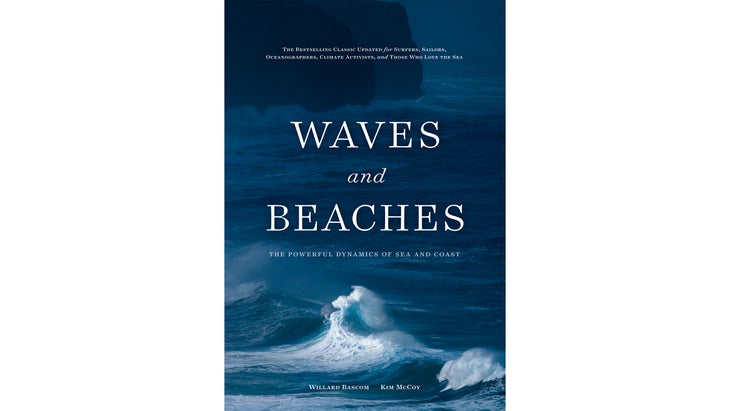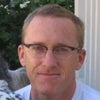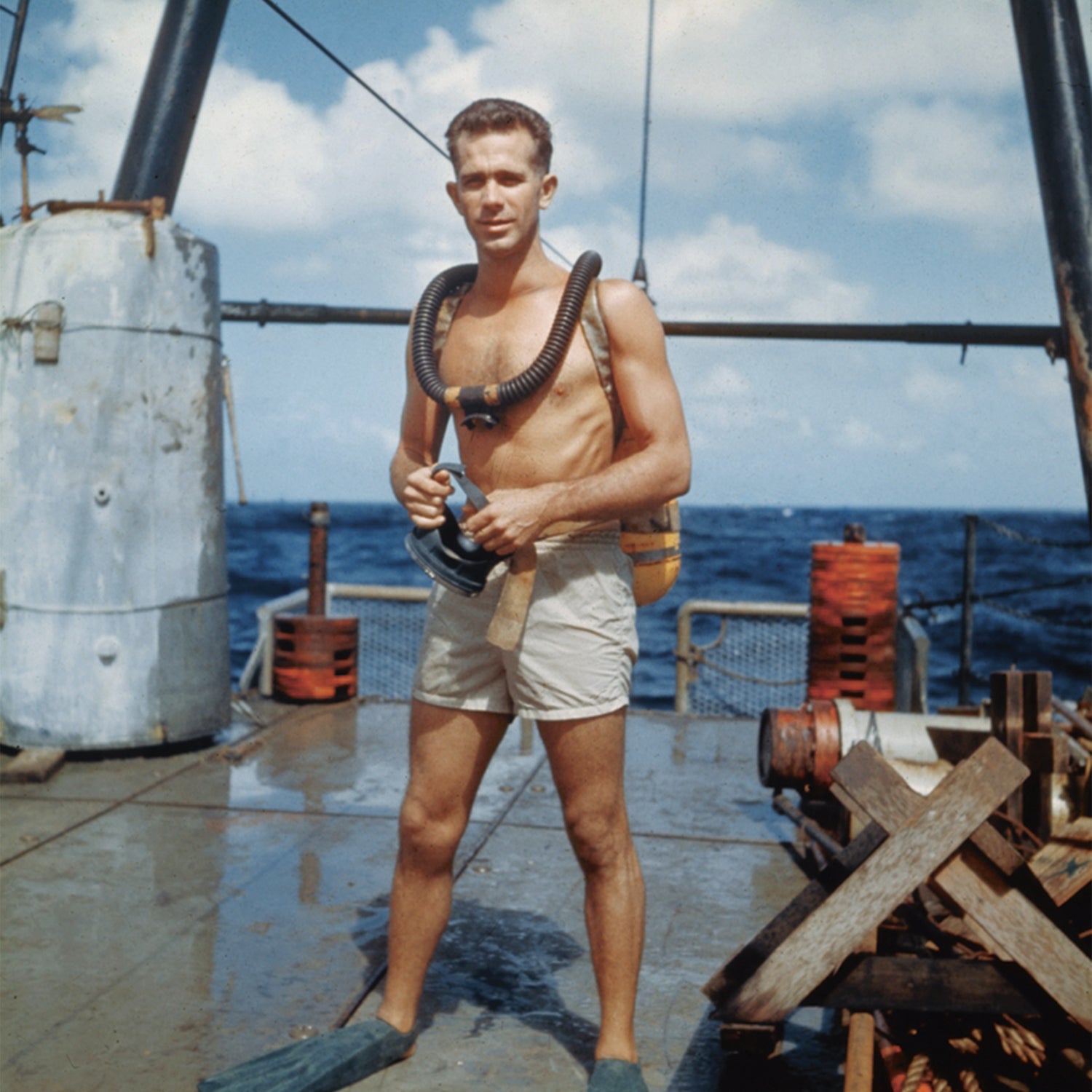In the mid-nineties, while prowling the library at the University of California at Santa Cruz for anything remotely related to surfing, I happened upon an extraordinary book, a 1964 first edition of Willard Bascom’s .��Surfing was a somewhat mysterious business in those days. I did an awful lot of it, mostly at a rocky point north of town. I spent even more time thinking about the beauty of breaking waves, the constant flux of sand, and how great it would be if I could predict either with any semblance of accuracy. But I knew almost nothing about the physical forces involved.
Like most surfers at the time, my best wave-forecasting tool was a battery-powered weather radio. Every night before I fell asleep, in those days before smartphones colonized our every waking moment, I turned on that radio to listen. An authoritative male voice, in a recorded statement updated every hour on the hour—as if speaking from some high perch with an infinite view of the sea—rattled off wind and wave data from every offshore buoy along the west coast. Starting in the far north, that man’s voice worked its way south, reporting each buoy’s local wind speed and direction, plus the direction, height, and interval of open-ocean swell.
My imagination always conjured images of these buoys bobbing and swaying in the night-dark ocean. If the swell reading of a particular buoy suddenly jumped in size—from, say, three feet at ten seconds to eight feet at 17 seconds—my mental image leapt with it. That meant waves were already on their way toward me, moving hundreds of miles across the face of the sea. The sheer excitement often infiltrated my sleep, causing me to awaken in the wee hours. I lived on a quiet street near a beach and would open a window to listen for the telltale thumping of waves. Over the years, I’d become acutely sensitive to the quality of this thumping, from the hollow slap of summer rills spanking the sand to the bunker-busting thunder of midwinter monsters. By counting seconds between impacts, I could also tell if a new swell had begun to hit. If it had, I’d lie there in bed and stare at the ceiling, running a subconscious algorithm crunching local tides and likely winds to settle upon the best possible time and place for the following day’s surf.
Beyond that, though, my relationship to the sea was heavy on questions and light on answers: Where do surfing waves come from, anyway? What causes waves to break the way they do? What exactly happens when we catch a wave on a surfboard?
“The trick of surfing, of course,” writes Bascom, as if in response to the latter, “is to get the board moving and the weight properly balanced so that the down-wave slope drag can take over the work of propulsion at the moment the wave passes beneath.”
The scientific dorkiness of that prose suggested that Bascom’s imagined reader was a beach-town Beaver Cleaver, thumbing pages while scanning airwaves with his homemade radio—someone very much like Bascom himself, in other words. Born in New York City in 1916, Bascom went to college at the Colorado School of Mines in Golden and later took a job with the Scripps Institution of Oceanography in San Diego. The sheer squareness of Bascom’s writing thrilled me so much, in the library at UC Santa Cruz, that I took the book home. For months, I swam in Bascom’s curiously exhaustive treatment of a delightfully narrow topic: the physical dynamics of ocean waves and the beaches against which they crash.
This included: a sweeping treatise on the origins of all ocean waves; mathematical descriptions of their ideal forms; beautiful explication of exactly how gravitational interaction between the earth, moon, and sun creates tides; and rousing accounts of destructive tsunamis and rogue waves encountered by ships at sea.

I didn’t have much money for books in those days, and I returned the library edition when I finished school. By that time, though, Waves and Beaches had lodged itself on the surfer’s library shelf of my mind as one of the few truly indispensable titles, a book that any genuine ocean lover simply had to own in order to feel complete. In later years, after I got a real job, I tried to buy a copy but was disappointed to discover that Waves and Beaches was in such scarce supply and high demand that prices had become ridiculous. One can still find copies online for upwards of $100. So I was genuinely thrilled to discover, late last year, that Patagonia was publishing ($30). Better still, given how much time had passed, this new edition had been updated by an oceanographer named Kim McCoy who has spent years researching surf-zone wave dynamics, sailed and freedived all over the world, and, according to his “About the Author” statement, “recently completed an Ironman and will continue to swim, dive, surf, sail, rock climb, and paraglide until motion stops, viscous drag ceases, buoyancy is lost, and gravity ultimately wins.” Best of all, McCoy befriended Bascom in the later years of Bascom’s life, and even discussed possible updates to Waves and Beaches before Bascom’s death in 2000. McCoy, in other words, was the perfect man for the job.
Once I got my hands on a copy of this latest edition, I noticed several things right away. First up, McCoy and Patagonia clearly conceived of their project as simultaneously an act of preservation—reintroducing a forgotten masterwork—and a genuine continuation of Bascom’s oceanography, bringing it up to the minute as Bascom himself might have done if he were still alive. The physical design of Patagonia’s Waves and Beaches also demonstrates a quiet wisdom: sturdily bound in hardcover but without a dust jacket, and printed on heavy paper stock, it seems purpose-built to survive decades of repeated reference, trips to beaches in sandy daypacks, and passing along to future generations. Mesmerizing new photographs of giant ocean waves, plus easy-to-understand scientific illustrations, speak directly to our information-hungry modern minds; and the careful balance between Bascom’s original prose and McCoy’s additions reflect a perfect understanding that Waves and Beaches remains indispensable for every surfer, sailor, kayaker, kiteboarder, freediver, and beach lover who has ever wanted to know exactly how and why the water and sand behave as they do.
McCoy’s contributions feel especially on-point with regard to contemporary ocean-research technology, recent epic storms, and chilling detail about climate change and how it threatens coastal cities. I have also been delighted to find Bascom’s old scientific dorkiness sustained through McCoy’s newly precise insights about surfing. These include an 11-point summary of wave conditions ideal for surfing, such as: “The lateral speed of breaking—the sideways extension of the curl along the crest—should be between one and two times the onshore speed of the wave.”
They also include equations for calculating how fast a surfer must travel over water to catch a wave of any particular height—35 miles per hour for a 60-footer—and how fast a surfer moves when up and riding on giant waves at Nazaré in Portugal, an astonishing 50 miles per hour. McCoy even throws in legally dubious advice for anyone curious to experience the feeling of free-falling off a 30-foot wave face: just drive a car across a bridge at 30 miles per hour and jump out the window into the river below.
Best of all, McCoy’s edition allowed me to savor passages that I’d either overlooked or forgotten, like Bascom’s account of the dream job that led to the book’s writing. Bascom was in his late twenties at the time and already a researcher at Scripps when, in 1945, he got hired by what he calls the “World War II Waves Project,” at the University of California at Berkeley. This outfit had been established, Bascom wrote, “to develop scientific means of determining the characteristics of beaches and of the waves that would make it difficult for landing craft to approach enemy-held beaches.” Its work continued after the war and allowed him to spend five years exploring and surveying beaches up and down the west coast of the continental United States. It sounds like an awful lot of fun. In those simpler days of fewer people and rudimentary gear, Bascom and his colleagues would drive the amphibious landing craft right off the beach into gigantic swells. Having seen restored DUKWs in use for tourist outings, I was astonished to reread Bascom’s account of deliberately surfing big waves in one by gunning the engine down a wave face and riding back toward shore.
Equally enjoyable, in a very different way, was the chapter on subtle hydrological forces that create fleeting sand forms like little rills and cusps and pinholes—the kinds of things we’ve all noticed during our own beach walks but never even thought to spend days and weeks weeks happily explaining.


